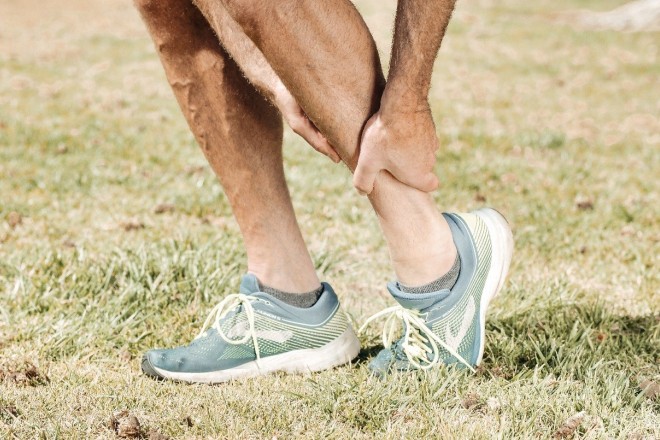
Photo Credit: by Kindel Media, Pexels.com
Peripheral artery disease (PAD) affects more than 8 million Americans above the age of 40. Many of them are unaware of their condition because they have no symptoms and it usually goes undiagnosed by health care professionals.
This is worrisome because early intervention can help lower the increased risk for heart attacks and stroke. PAD usually responds to lifestyle changes and medical care but needs to be monitored closely.
Keep in mind that PAD may also be called intermittent claudication, peripheral vascular disease or hardening of the arteries. It is caused by a condition where plaque gradually builds up in your blood vessels (atherosclerosis). The risk is higher in people that smoke or have other heart conditions.
As the arteries narrow and stiffen, circulation may slow down. As a result, your body may not get enough oxygen, especially in your arms and legs. The first signs you may notice are muscle aches or cramps in your calves that show up when you walk or climb stairs and go away when you rest. PAD may also cause wounds to heal more slowly. If left untreated, PAD may lead to gangrene and amputation.
Keeping your arteries healthy can help you lead a long and active life. Learn more about how to fight PAD. The goal of treatment is to improve mobility and quality of life, increase capacity for regular exercise and prevent adverse cardiovascular events such as stroke or heart attacks.
Medical Care for Peripheral Artery Disease:
1. Know your risks. In addition to age, a number of factors can make you more vulnerable to PAD. That includes having high blood pressure, high cholesterol, diabetes, smoking, and physical inactivity.
2. Get diagnosed. If your doctor suspects PAD, they will physically examine your legs and probably perform an ankle brachial index test that compares the blood pressure in your ankle to the blood pressure in your arm. Additional tests may include an angiography and ultrasound scans.
3. Take medication. Cilostazol is an antiplatelet drug commonly prescribed for PAD. It works by reducing the risk of clot formation. Your doctor may also recommend statins to lower your cholesterol. Statin therapy may slow progression of PAD and reduce painful symptoms even in people with normal cholesterol levels. Other medications that can be prescribed by your doctor include medications to control blood pressure, blood sugar, and muscle pain.
4. Monitor blood pressure and cholesterol. PAD is often associated with high blood pressure and cholesterol. In addition to taking your medication as prescribed, your doctor may recommend you monitor your blood pressure at home because it can change quickly. Regular laboratory tests to monitor cholesterol levels may also be needed.
5. Consider surgery. In more advanced cases, surgery may be necessary. Angioplasties use a small balloon to hold your arteries open. They’re usually done as an outpatient procedure, so you can go home the same day. The best candidates for surgery are those who are younger, do not have diabetes, and have little disease in the vessels below the knee.
Lifestyle Changes for Peripheral Artery Disease:
1. Stay active. Moving around more is one of the most effective ways to fight PAD. If you’ve been sedentary for a while, gradually ease into a regular workout routine. Aim to exercise for at least 30 minutes per day for 5 days a week.
2. Do leg exercises. While PAD can affect any part of your body, your limbs are usually the main targets. Spot exercises that target your legs, along with walking outdoors and on a treadmill, can be especially helpful. It is okay if you need to take breaks and rest in order to minimize discomfort and fatigue.
3. Quit smoking. Adults who smoke are four times more likely to develop PAD. If you’ve tried to quit in the past, try again. Talk with your doctor about combining methods. You might use a nicotine replacement device and go to support meetings.
4. Limit salt. Using too much sodium can raise your blood pressure. Eat more whole foods instead of processed items and read the labels when you buy packaged items. Flavor your dishes with other ingredients, like lemon and garlic. The new salt guidelines for Americans suggest a limit of 2300mg of salt per day for people aged 14 years and older.
5. Lose weight. Being overweight or obese is another risk factor. Shed excess pounds with a nutritious diet full of vegetables, fruits, whole grains, and a limited amount of healthy fats.
One in three patients with heart disease has PAD, so it can be a major factor in your cardiovascular health. Make smart lifestyle choices and talk with your doctor about your individual concerns. If you ever notice consistent pain, numbness, achiness, or heaviness in the leg muscles when walking or climbing stairs, a pale or bluish color to the skin, a lower temperature in one leg than the other leg. Talk to your doctor about your symptoms to determine how best to manage your symptoms.
###
Your email address will not be published. Required fields are marked with *.